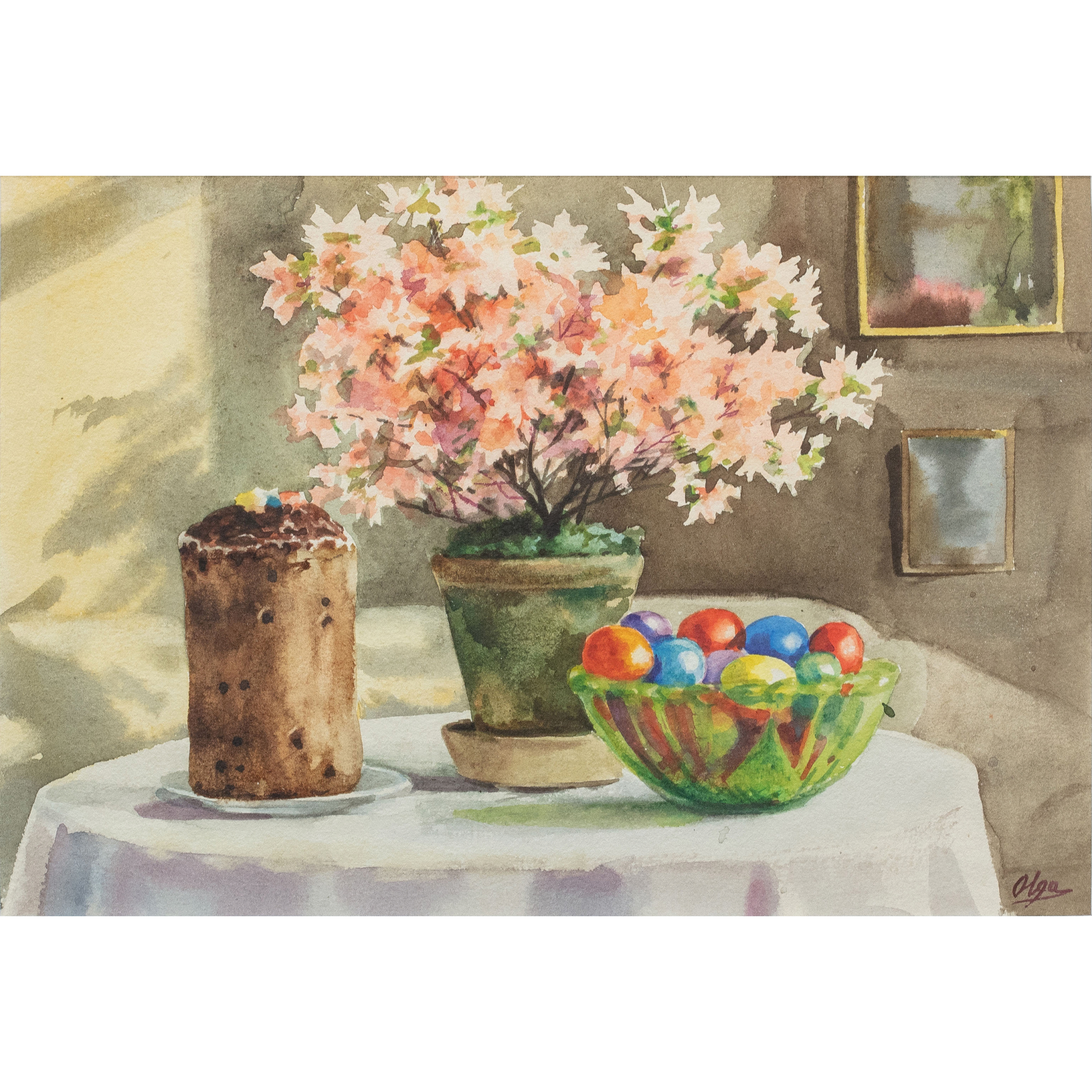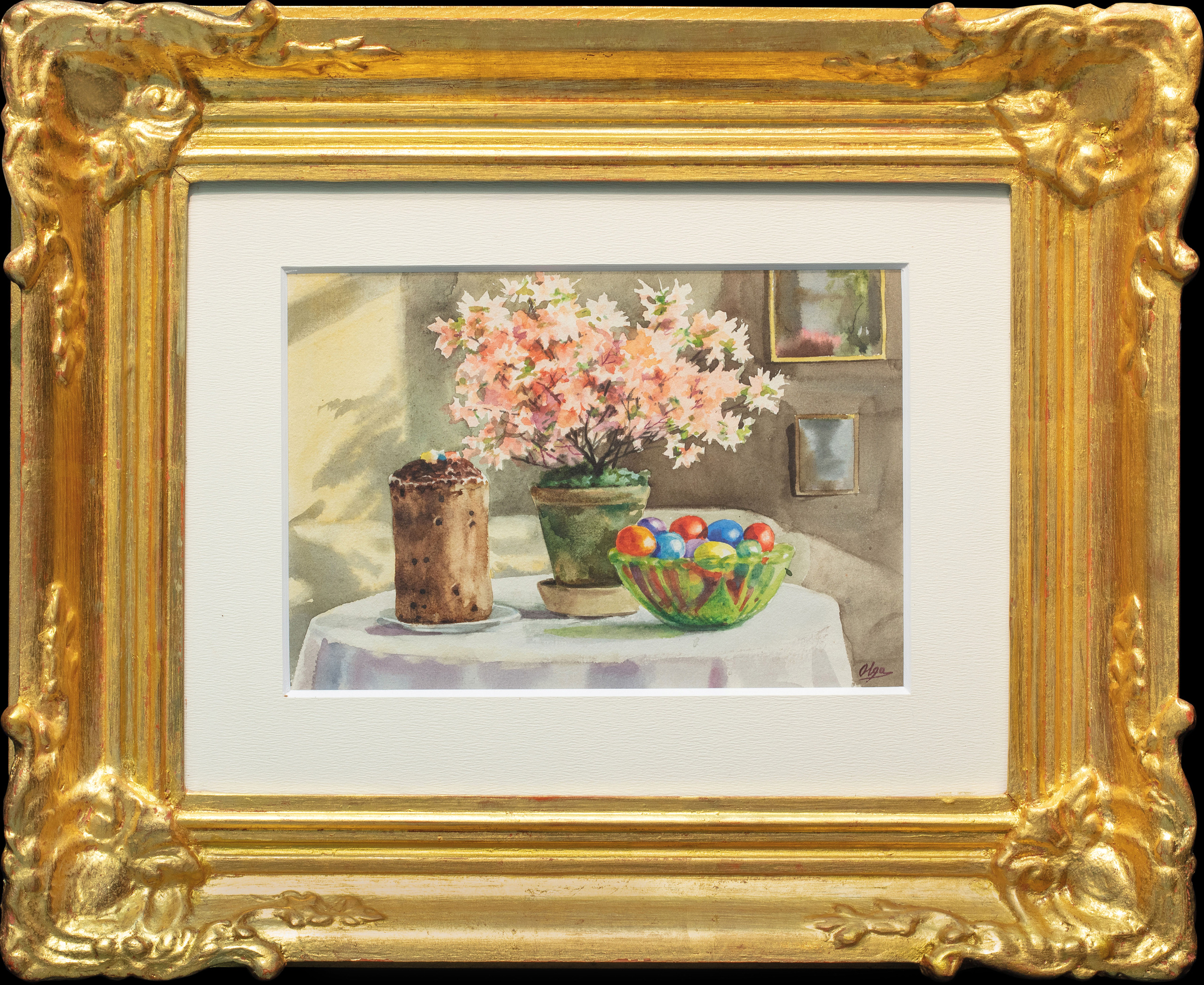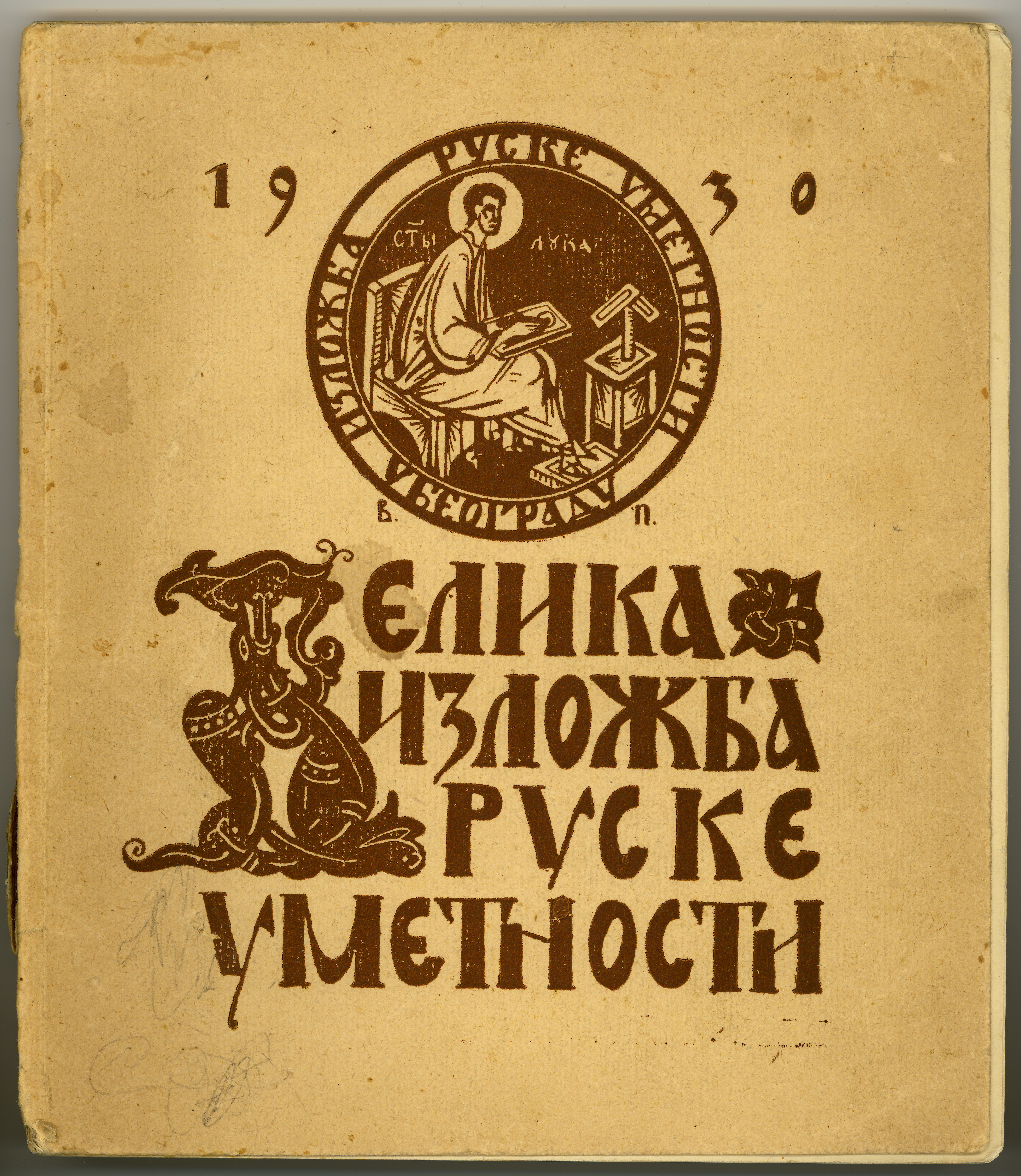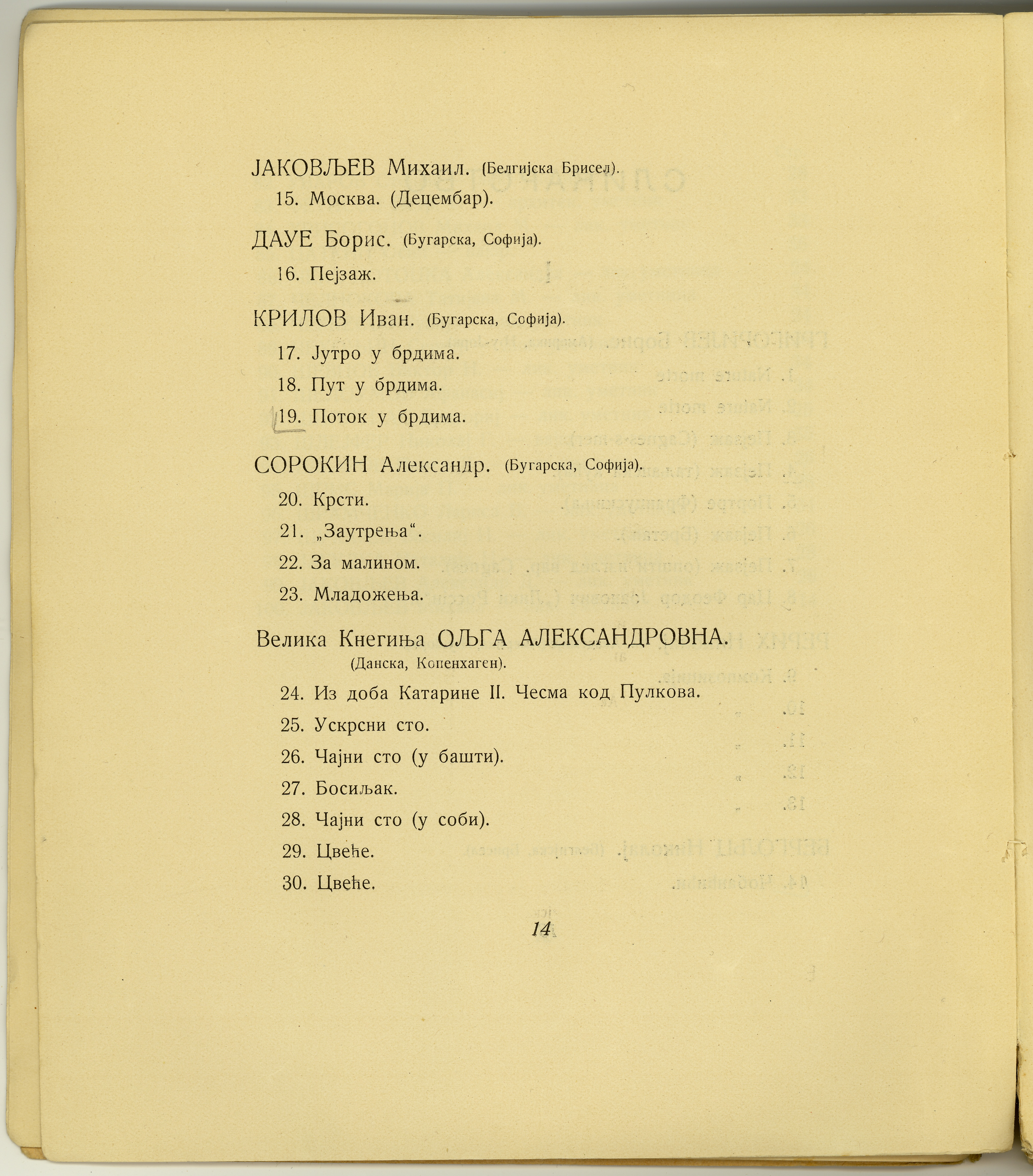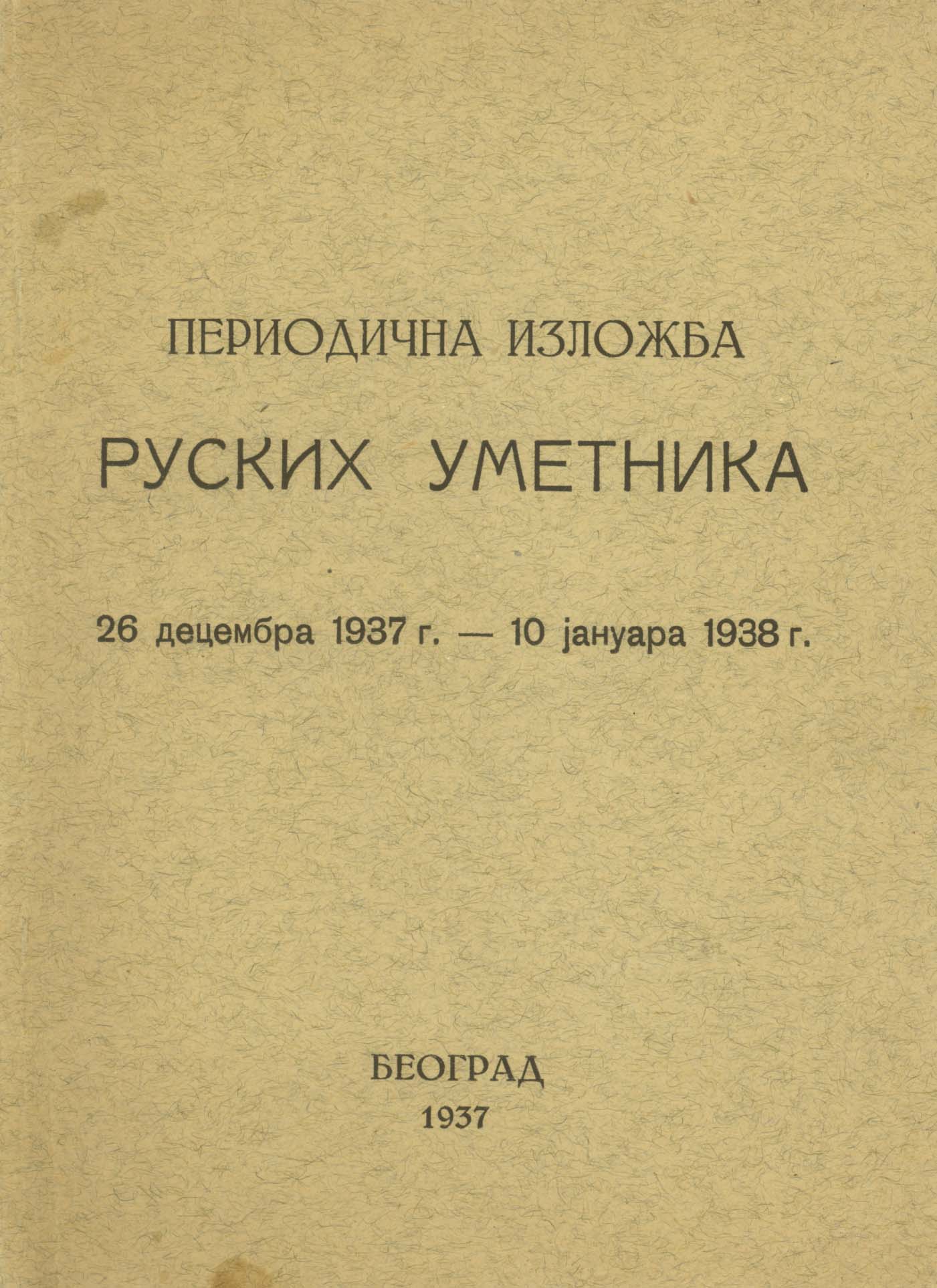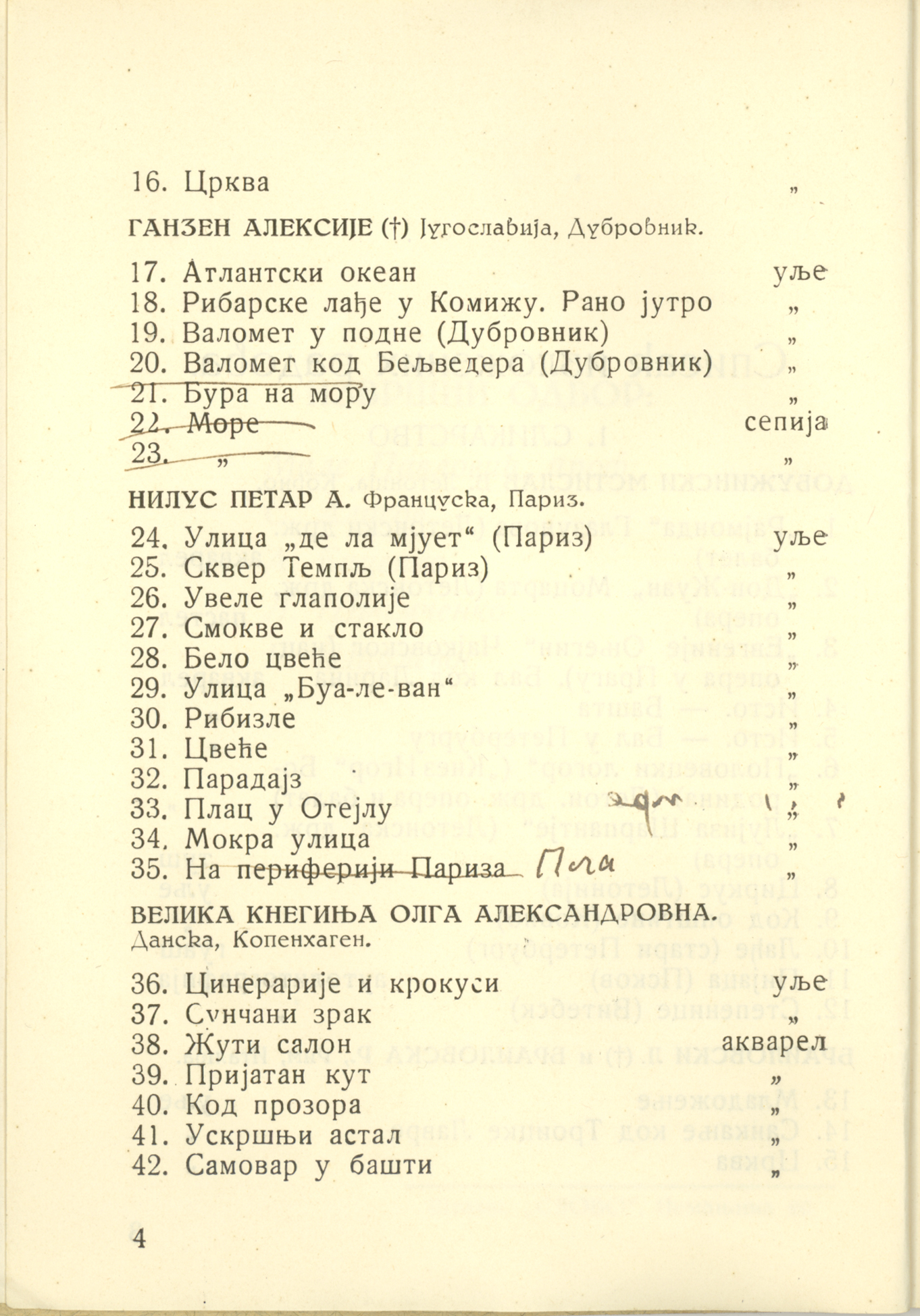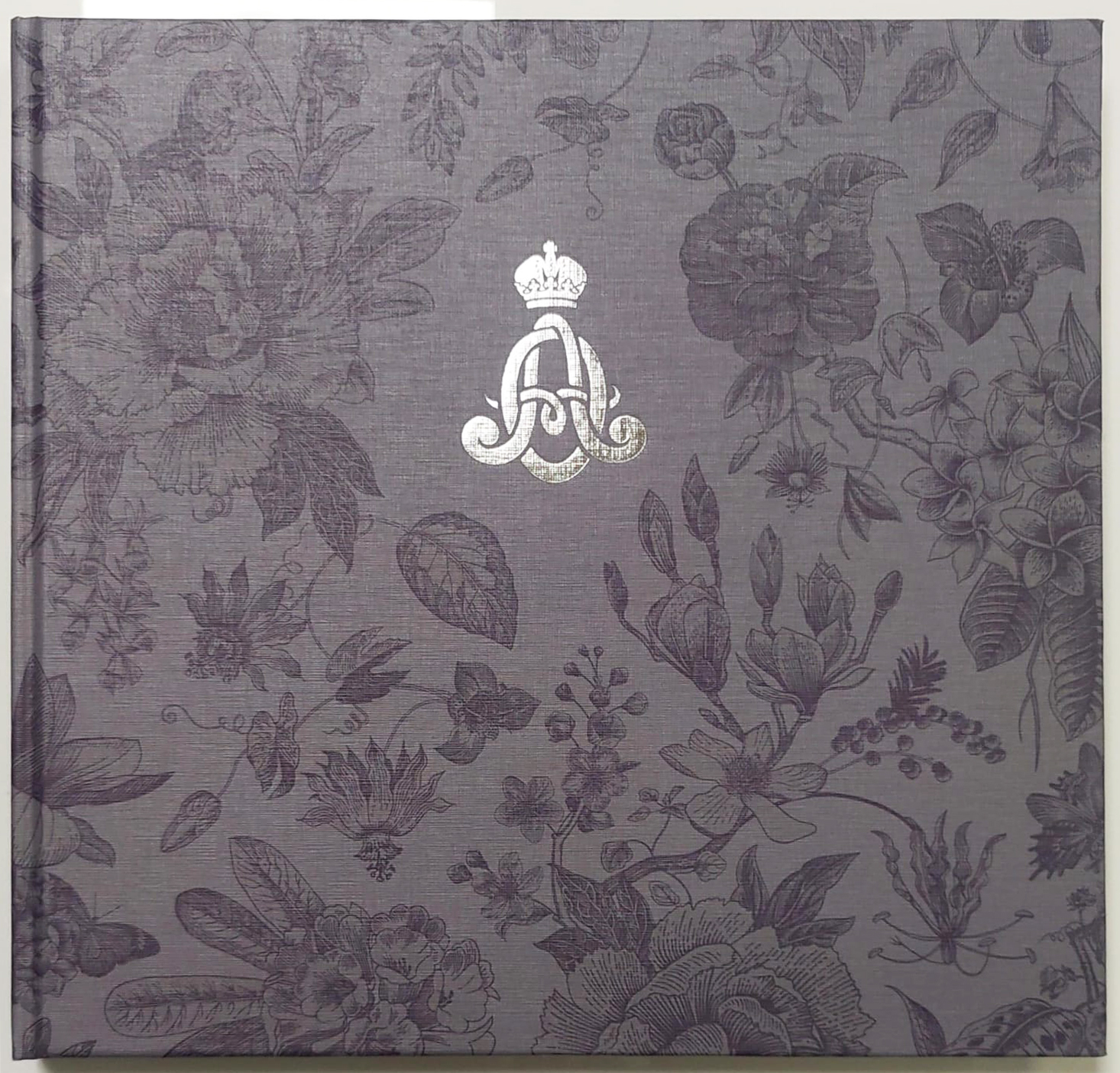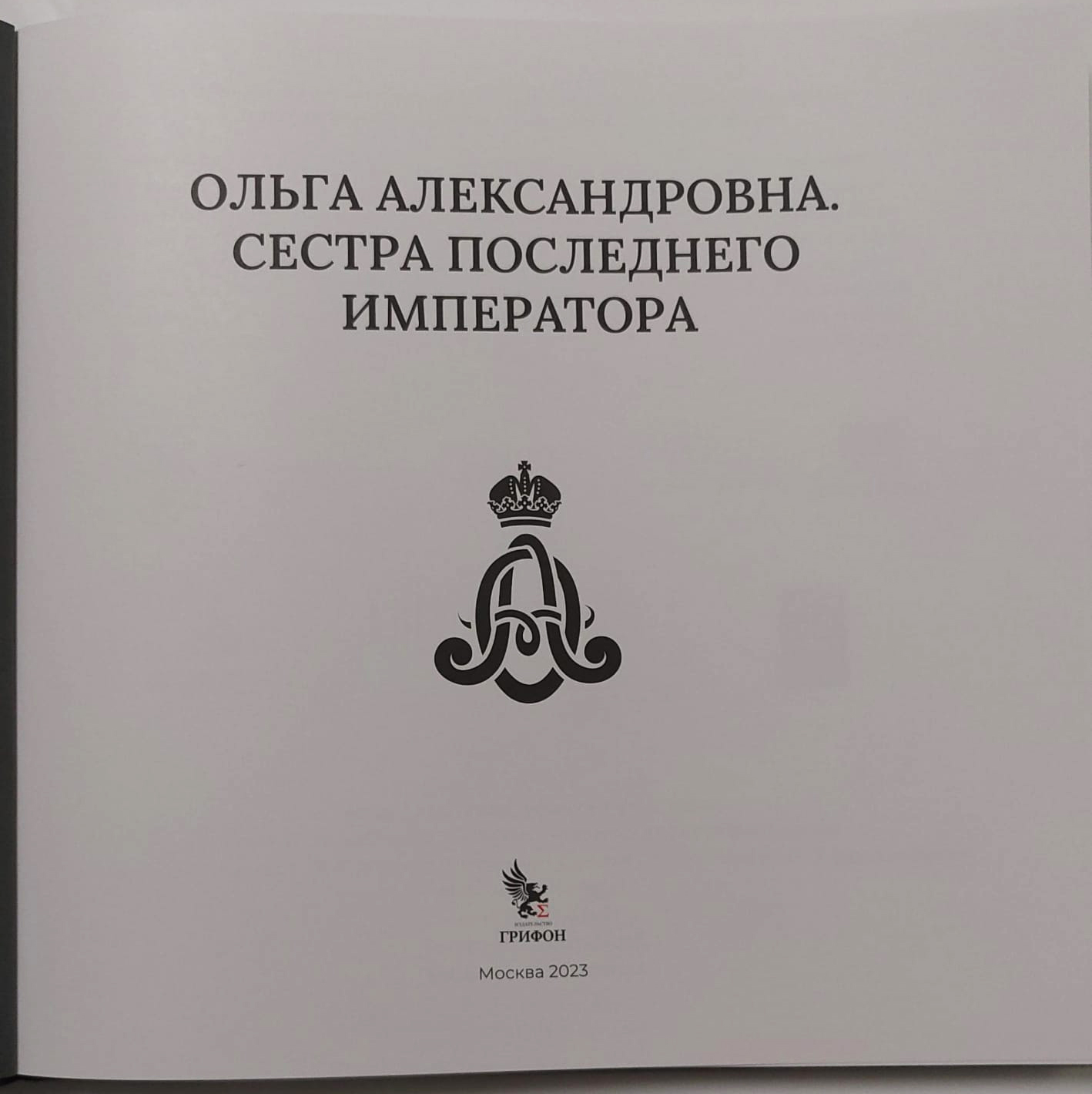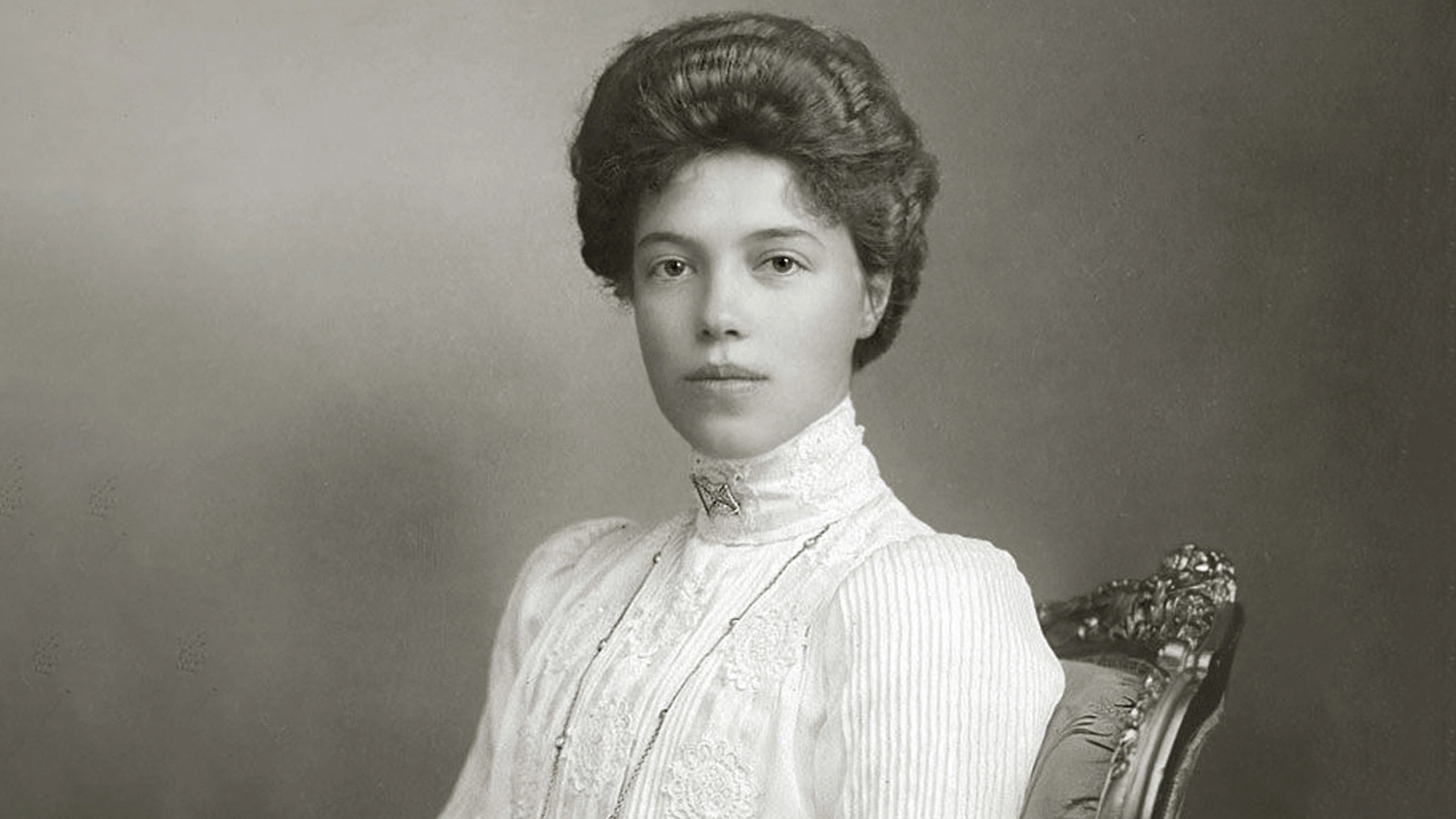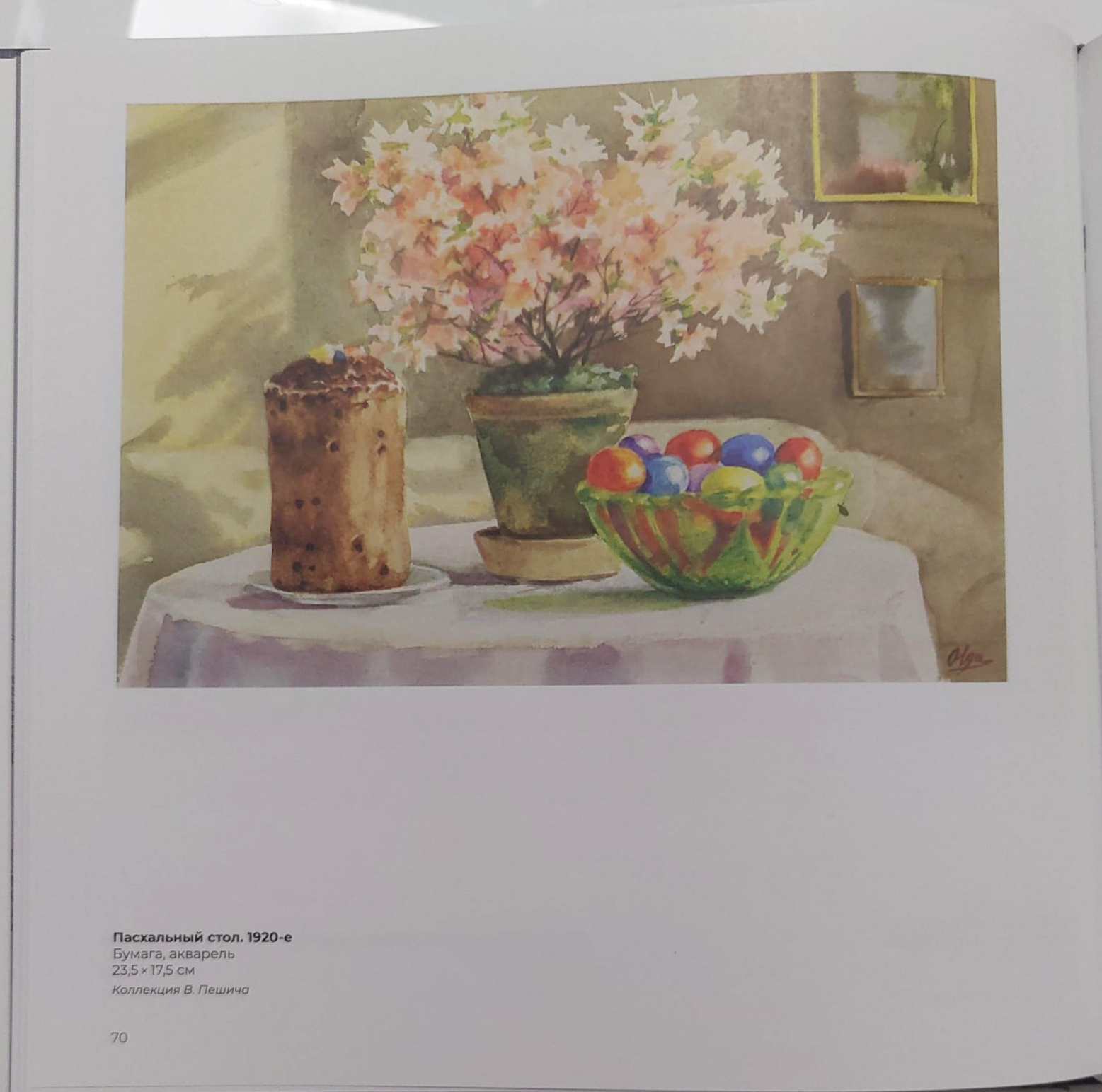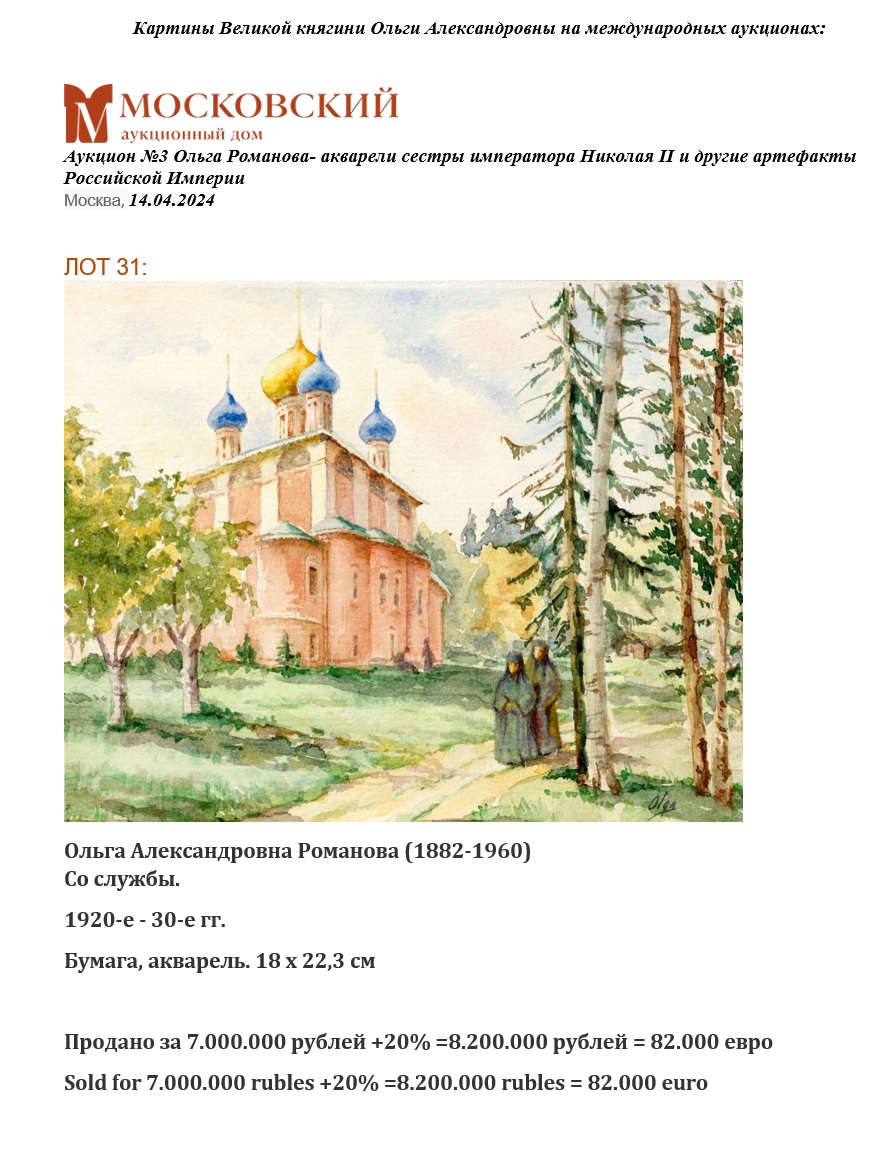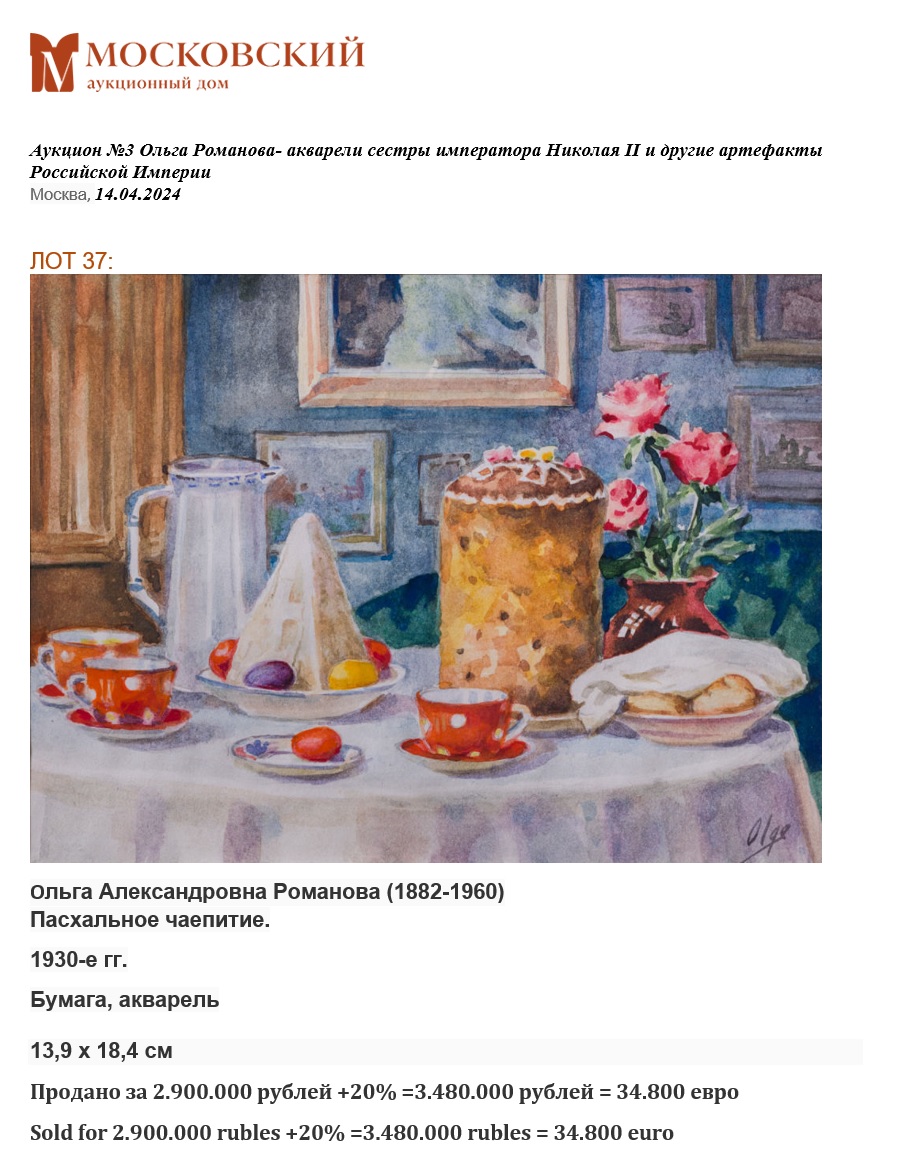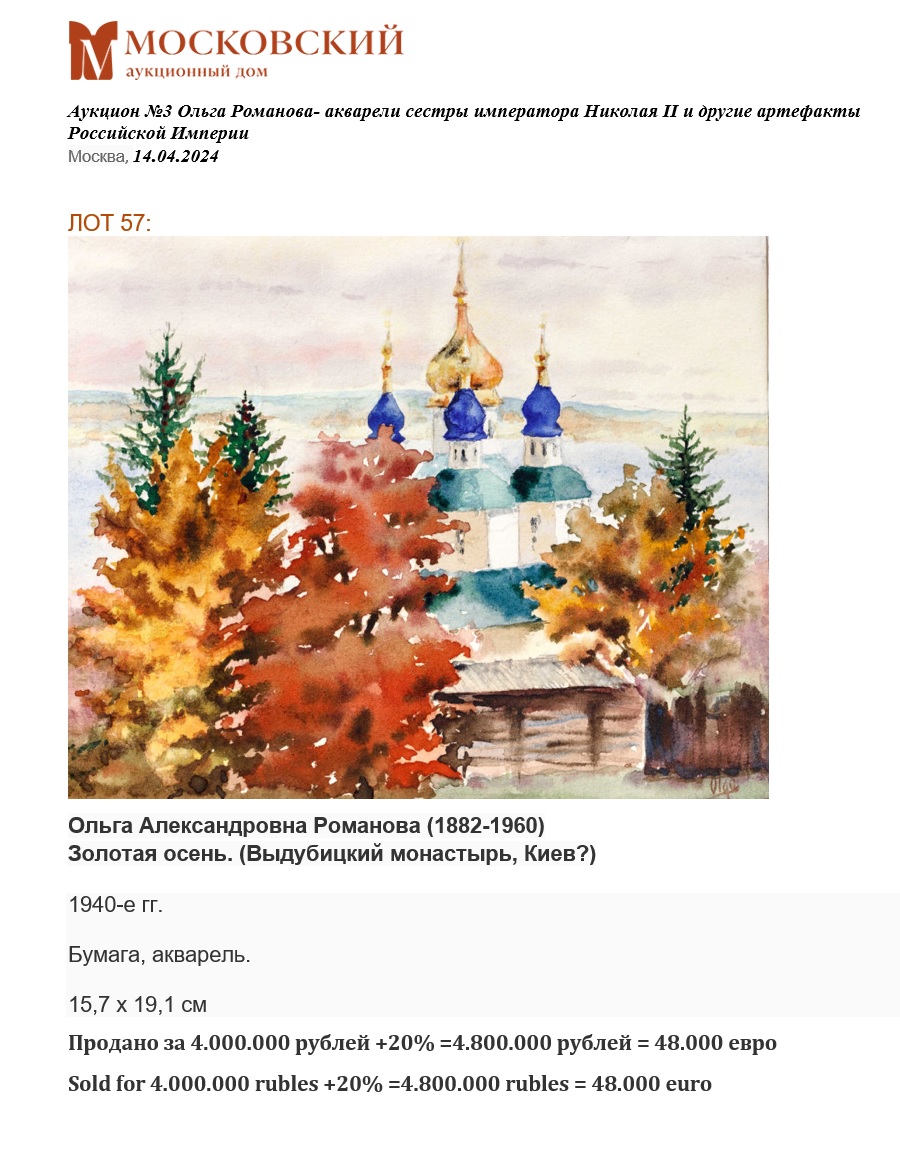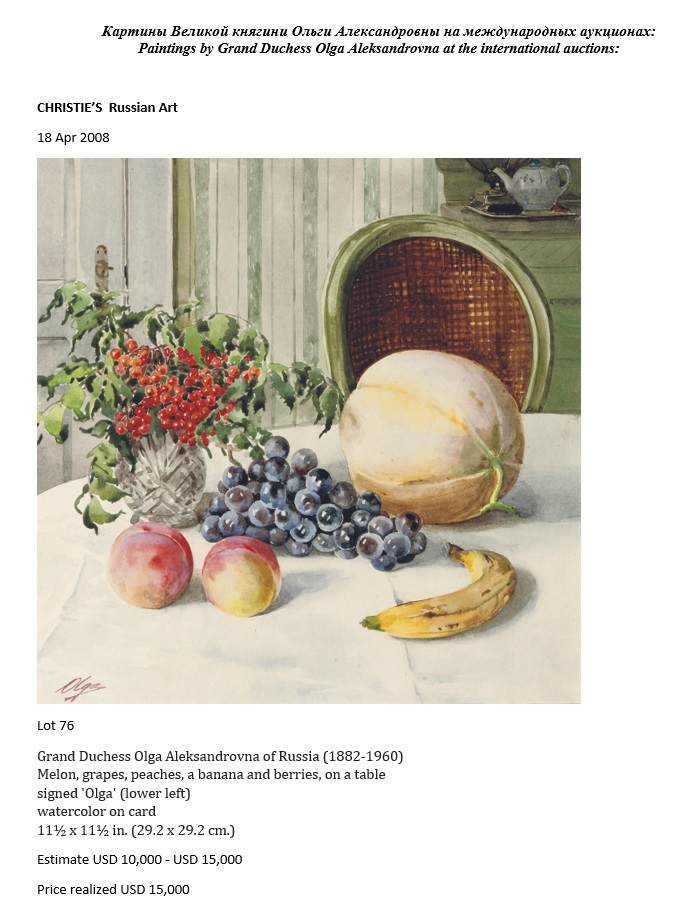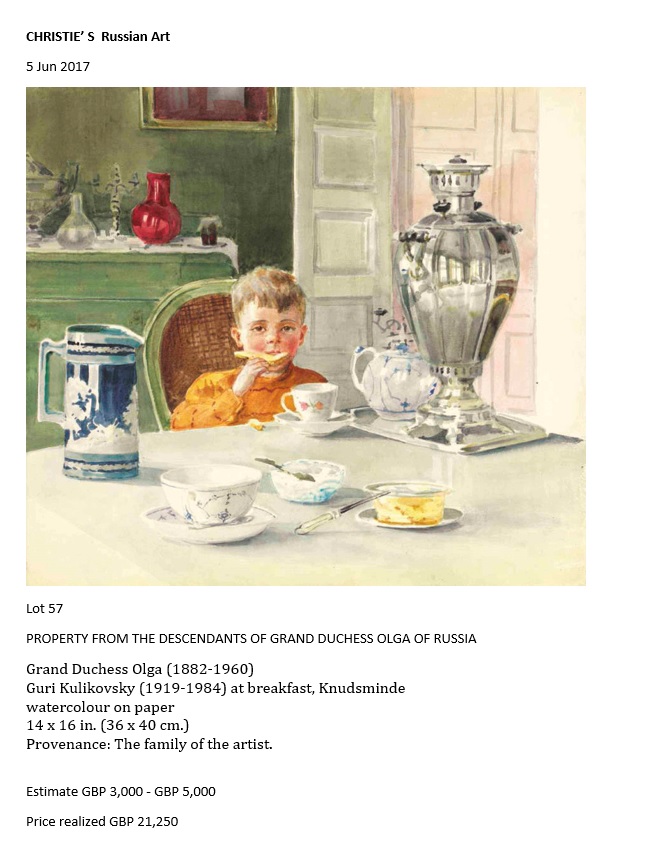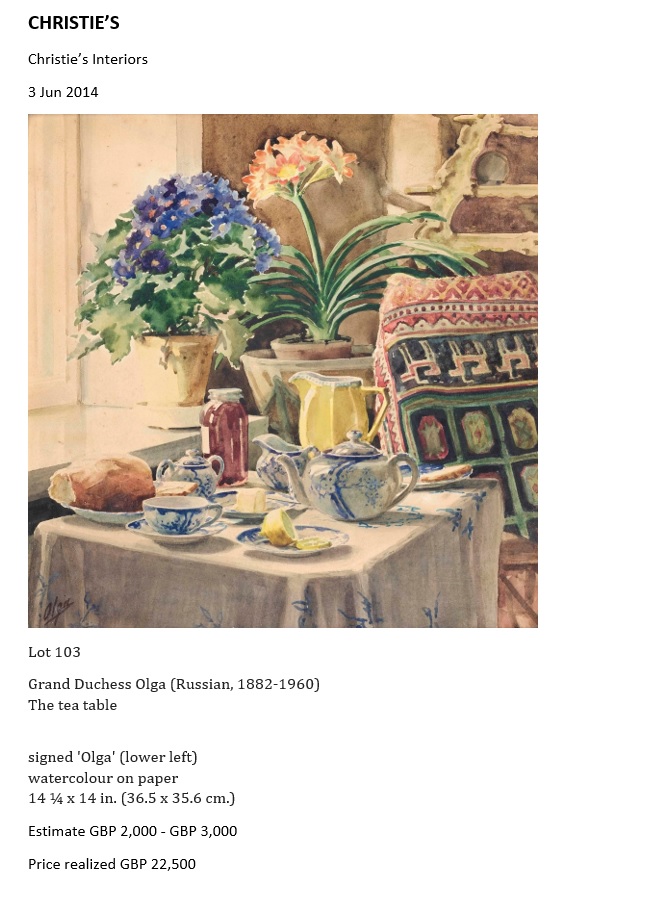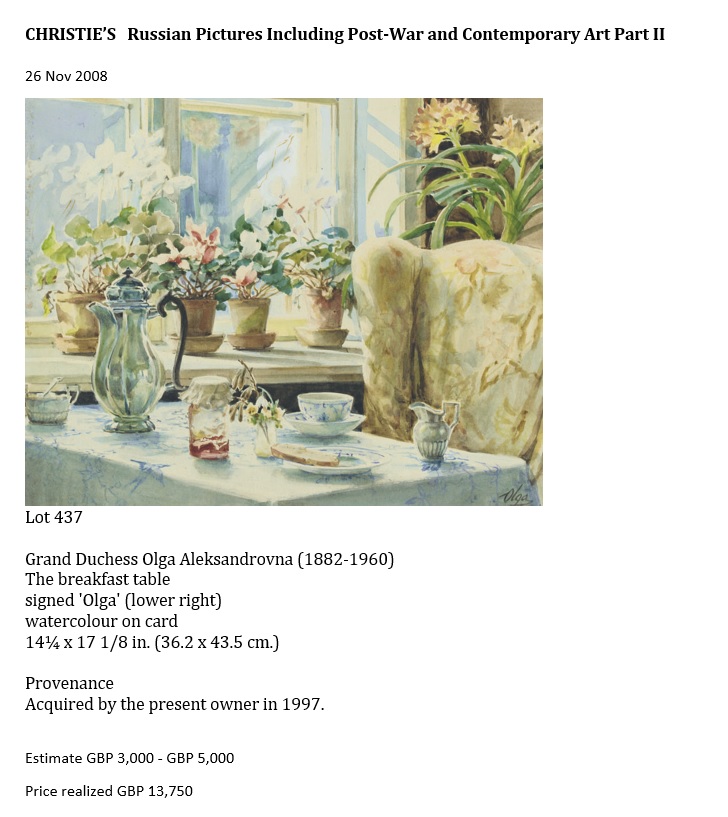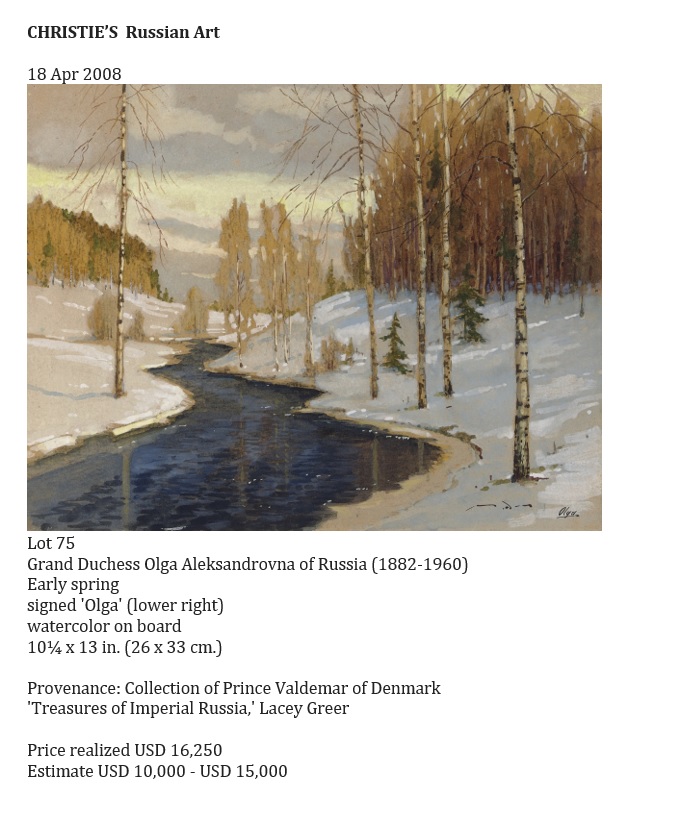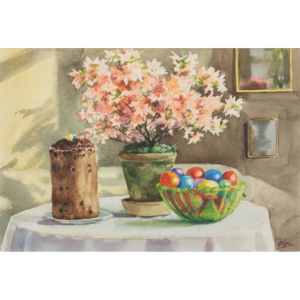GRAND DUCHESS OLGA ALEXANDROVNA ROMANOVA (1882 – 1960)
A dedicated landscape painter, a compassionate sister of mercy, a charity fundraiser, she started painting in early childhood and dedicated every free moment to it.
Grand Duchess Olga Alexandrovna (1882-1960) was the daughter of Emperor Alexander III and Empress Maria Feodorovna (known before her marriage as a princess of Denmark) and the younger sister of Emperor Nicholas II. She spent her childhood in the Gatchina palace, where she began painting. She was taught by the best artists, pedagogues K. V. Lemokh, V. Y. Makovsky, S. J. Zhukovsky and S. A. Vinogradov. Alexander III approved and supported his daughter’s dedication to painting.
Olga Alexandrovna’s early aquarelles depict life of the Romanovs in the Gatchina and Alexandrovsky palaces – they depict the royal family and scenes from ceremonial halls. During the celebration of Christmas and Easter, the Grand Duchess liked to paint children playing and still life – festive tables. Postcards with reproductions of her aquarelles, which were printed in large amounts before the revolution, were exhibited at the exhibition in Moscow.
In the early 1900s, Olga Alexandrovna organised exhibitions of young artists in the palace.
All the money raised by selling these paintings went to charity. The Grand Duchess was the sponsor of the Imperial Society of Russian Aquarelles and the A. I. Kuindzhi Society of Artists. During the World War I, Olga Alexandrovna opened the First Hospital in Yevgenyevsk at her own expense, where she worked as a sister of mercy. Even at the front, the Grand Duchess devoted her time to painting – her aquarelles immortalised scenes from the hospitals and portraits of officers.
The Grand Duchess’s paintings of her sons are filled with care and love. In August 1917, in Ai-Todor, Crimea, Olga Alexandrovna and her husband N. A. Kulikovsky had their first son, Tikhon. When the Empress Maria Feodorovna left Russia as a widow, Olga Alexandrovna stayed with her family in Kuban, in the village Novominskaya, where her second son, Gury was born. The family then moved to Rostov-on-Don, and later reached Denmark via Constantinople and Serbia in 1920.
Grand Duchess Olga Alexandrovna held personal exhibitions in Copenhagen (1934) and London (1936).
At the Great Exhibition of Russian Art in Belgrade (1930), which was held in the pavilion Cvijeta Zuzorich, on Kalemegdan, she exhibited ten paintings. The work Easter Table is part of the Peshich family collection.
Olga Alexandrovna’s family lived in Denmark with widowed Maria Feofdorovna in the royal palace Amalienborg in Copenhagen. In 1948, the Soviet Union sent a note of protest regarding the fact that Olga Alexandrovna was helping Russian prisoners of war and refugees, so the Kulikovsky family was forced to move to Canada. The Grand Duchess bought a house and a small farm in Campbellville not far from Toronto. In Canada, she continued to paint and sell her paintings with great success, which was a source of income for the family.
Grand Duchess Olga Alexandrovna passed away on November 24, 1960. She was buried in a cemetery in the North York, area of Toronto, along with her husband N. A. Kulikovsky.
Exhibitions of her works were held in Washington (2001, residence of the Russian ambassador), Moscow (2002, 2005, 2007), Yekaterinburg (2004), St. Petersburg (2005), Balashikha (2006), Tyumen (2006), Surgut (2007), Vladivostok (2013), Tretyakov Gallery in Moscow (2018).
A charity fund was established in the name of Her Imperial Highness, Grand Duchess Olga Alexandrovna.
Her works are a part of numerous museum collections in Russia and around the world.
